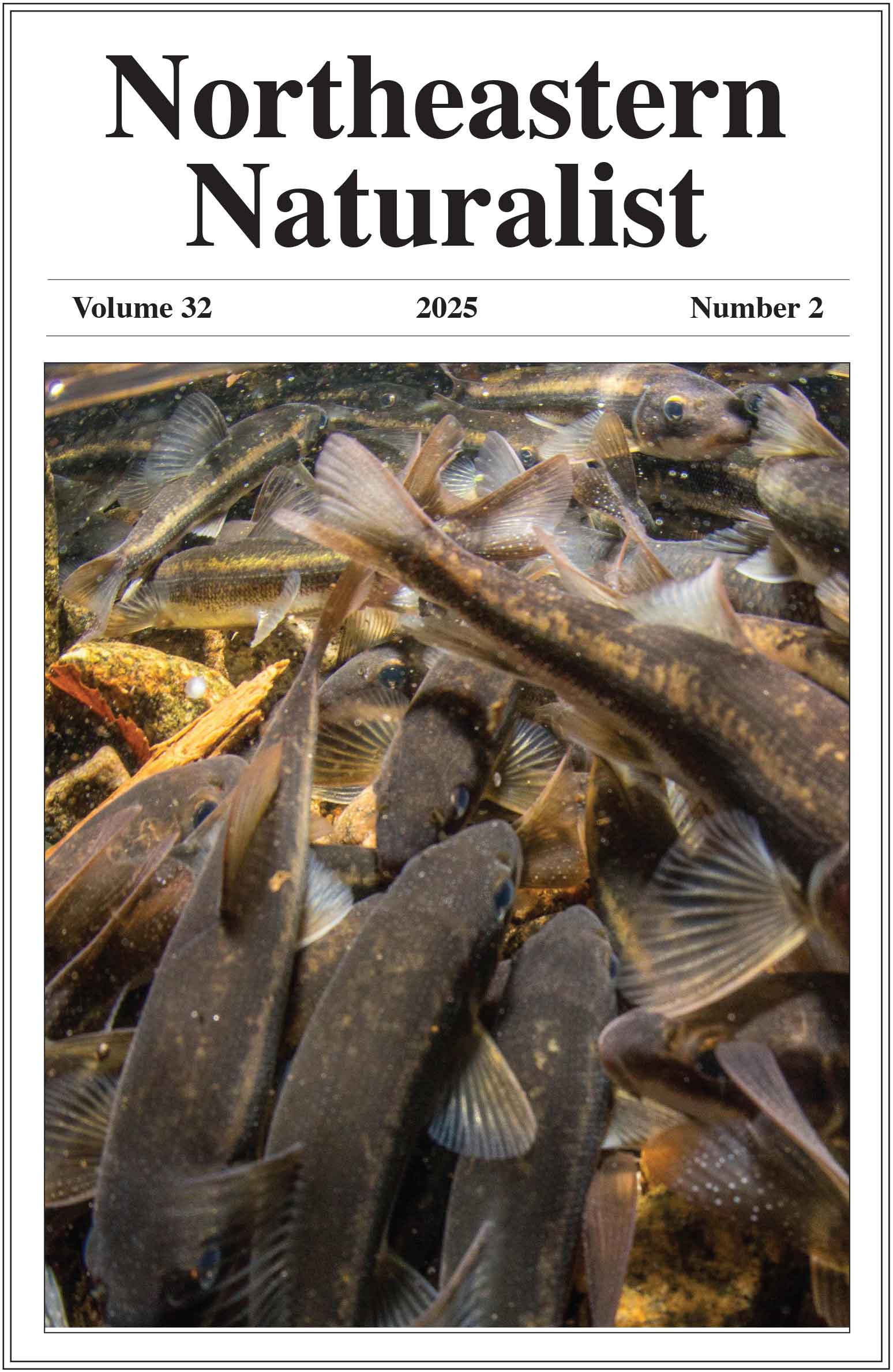First Record of an Established Population of Introduced Anolis carolinensis (Voigt) (Green Anole) in Norfolk (Independent City), Virginia, with an Updated Statewide Distribution Map of the Species
Zachary T. Steele1,*, Karen Caceres1, and Antonella Panebianco2
1Old Dominion University, Department of Biological Sciences, 110 Mills Godwin Life Sciences Building, Norfolk, VA 23529.2Grupo de Investigación en Eco-Fisiología de Fauna Silvestre, Instituto de Investigaciones en Biodiversidad y Medio ambiente, Consejo Nacional de Investigaciones Científicas y Técnicas (CONICET)-Universidad Nacional del Comahue (UNCo), San Martín de los Andes. Neuquén, Argentina. *Corresponding author.
Northeastern Naturalist, Volume 31, Issue 3 (2024): N23–N29
First published early online: 27 September 2024
Abstract
Anolis carolinensis (Green Anole) is distributed throughout the southeastern US. Along the east coast, the northernmost natural range of the Green Anole extends to barrier islands of the Outer Banks within Dare County, NC. Populations of the Green Anole have also expanded north along the Outer Banks into the Currituck National Wildlife Refuge (Currituck County, NC) near the North Carolina–Virginia border, although it’s unclear whether this expansion is natural, or human influenced. Recently, an established population of introduced Green Anoles was documented in the City of Virginia Beach (independent city), VA, ~40 km north of the Currituck National Wildlife Refuge. Here, we document another established population of Green Anoles in the City of Norfolk, VA, ~ 20 km west of the City of Virginia Beach population. Future documentation of Green Anole populations in Virginia is critical to differentiating between natural range expansion and extended distribution through human introductions.
![]() Download Full-text pdf (Accessible only to subscribers. To subscribe click here.)
Download Full-text pdf (Accessible only to subscribers. To subscribe click here.)
Access Journal Content
Open access browsing of table of contents and abstract pages. Full text pdfs available for download for subscribers.
Issue-in-Progress: Vol. 32 (3) ... early view
Check out NENA's latest monograph and Special Issue:













 The Northeastern Naturalist is a peer-reviewed journal that covers all aspects of natural history within northeastern North America. We welcome research articles, summary review papers, and observational notes.
The Northeastern Naturalist is a peer-reviewed journal that covers all aspects of natural history within northeastern North America. We welcome research articles, summary review papers, and observational notes.